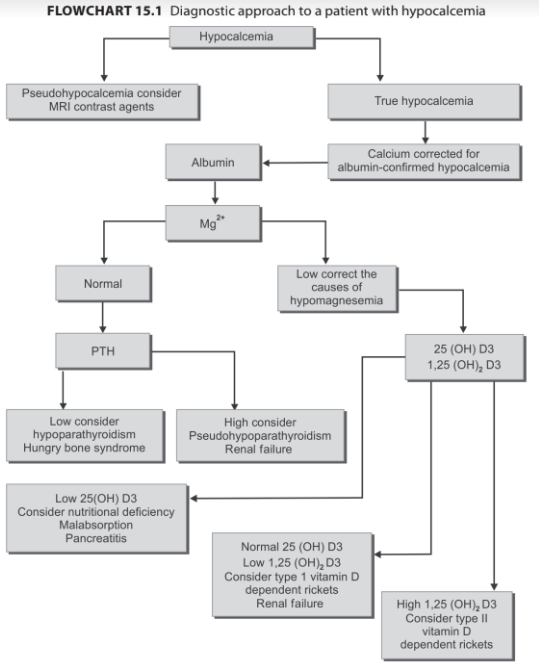An 8-year-old girl is brought with complaints of short stature and recurrent seizures. She was started on antiepileptics about 6 months back but 2 days back she developed tetany and her serum calcium was found to be 5 mg/dL and is hence referred to endocrinology. Her calcium levels at the time of seizures were not checked in the past. She is conscious and oriented at the time of examination. Her pulse rate is 110/min and BP is 90/60 mm Hg and respiratory rate is 20/min; she is afebrile. She has moon facies and alopecia. Her BMI is normal, and secondary sexual characteristics are well-developed. There are no bony deformities in the limbs. Signs of latent tetany (Chvostek and Trousseau signs) are positive. There are bilateral cataracts but no evidence of papilledema. Examination of other systems namely cardiovascular, respiratory, and nervous is normal. Emergency investigations show low total serum calcium of 5 mg/dL (8.5–10.5 mg/dL) and her ionized calcium is 2.5 mg/dL (4.60–5.30 mg/dL). Serum magnesium level (1.5 mg/dL) is low normal and her phosphorus is 8 mg/dL (2.5–4.90 mg/dL) and her parathormone is 500 pg/mL (range 11 to 79.5 pg/mL). A noncontrast (NCCT) scan of the brain reveals bilateral basal ganglia and pineal gland calcification. The QTc interval is prolonged to 0.46 seconds. A provisional diagnosis of hypocalcemic seizures is made.
What is the diagnostic approach for a case of hypocalcemia?
The first step in the diagnosis is to confirm that true hypocalcemia is present. An acute transient hypocalcemia can be a manifestation of a variety of severe, acute illnesses. Chronic hypocalcemia, however, can usually be ascribed to a few disorders associated with absent or ineffective PTH. Important clinical criteria include the duration of the illness, signs or symptoms of associated disorders, and the presence of features that suggest a hereditary abnormality. A nutritional history can be helpful in recognizing a low intake of vitamin D and calcium in the diet and a history of excessive alcohol intake may suggest magnesium deficiency (Flowchart 15.1).

need an explanation for this answer? contact us directly to get an explanation for this answer